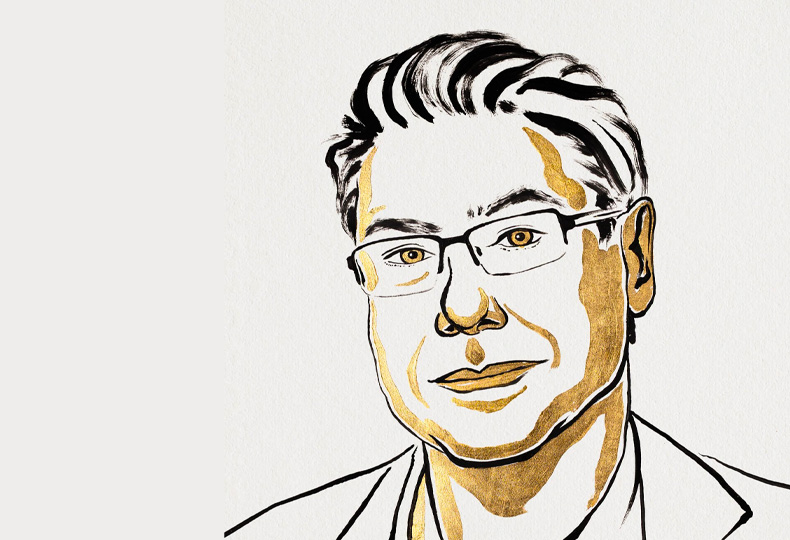2025 Nobel Prize in Economics winner Philippe Aghion, an alumnus of ENS Paris-Saclay

A specialist in growth and innovation, Philippe Aghion, together with Peter Howitt, formalized the concept of creative destruction theorized by Joseph Schumpeter, thus providing a rigorous framework for understanding the role of innovation in long-term economic dynamics.
Congratulations!
His main research work
Philippe Aghion profoundly renewed our understanding of growth by developing, with Peter Howitt, the Schumpeterian theory based on creative destruction. In this theory, innovation continually replaces obsolete technologies and fuels long-term growth. (Ref.: Aghion et Howitt, 1992, Econometrica)
Other of his works show that competition can stimulate innovation and that institutions play a decisive role in transforming individual creativity into collective progress. (Ref.: Aghion et al., QJE, 2005)
He also analysed how innovation can both widen inequalities and promote social mobility, depending on the educational, fiscal and industrial policies that accompany technological change. (Ref.: Philippe Aghion, Alexandra Roulet, Repenser l’État, 2011, le Seuil)
His research on the role of the state highlights the need for a public framework capable of encouraging research and competition while limiting exclusionary effects. (Ref.: Aghion, Antonin et Bunel, Le pouvoir de la destruction créatrice, 2021, Éditions Odile Jacob)
Finally, his recent work on artificial intelligence examines how this technological revolution can increase productivity and support employment, provided that institutions adapt training and labour reallocation to new technologies. (Ref: Aghion et Bunel, 2024. “AI and Growth: Where Do We Stand,” Fed. Reserve Bank of San Franciso Working Paper)
This exceptional career path also recognises the scientific rigour, disciplinary openness and intellectual ambition of ENS Paris-Saclay and the Paris-Saclay University ecosystem.
Growth and innovation
Philippe Aghion explains the current strength of the US economy by its capacity for innovation, particularly in high-tech sectors such as digital technology, artificial intelligence (AI) and biotechnology.
"The key factor is technological leadership. This allows them to control value chains, assert their commercial strength, and ensure the supremacy of the dollar by attracting foreign savings to finance their debt."
According to Philippe Aghion, France has failed to take advantage of the revolutions in information and communication technologies (ICT) and biotechnology through innovation.
Expanding the market for innovative new products
His work profoundly renewed growth theory by demonstrating the central role of the process of creative destruction, whereby technical progress replaces old technologies, generating both economic progress and challenges.
"To become a true economic power, Europe must expand the market for new innovative products and develop a financial ecosystem that attracts savings towards innovation." These savings must be better directed towards risk and promote disruptive innovation or the large-scale development of high-tech activities.
Investing in education: a priority
Philippe Aghion emphasises the importance of education. He points out that innovation cannot be conceived without an ambitious education policy. This vision is in line with the values upheld by ENS Paris-Saclay: to train rigorous, committed and multidisciplinary minds.
"By investing in education, we will produce more innovators and our society will become more inclusive. France must first invest in its education system. There are many lost Albert Einsteins and Marie Curies, i.e. gifted children who have not been exposed to the knowledge they need to become innovators. A good education system is the cornerstone of any serious innovation policy. This requires well-trained and well-paid teachers, homework done at school, and individual monitoring of pupils."
His career
Philippe Aghion is a former student of the Mathematics Department (class of 1976-1980) at ENS Cachan (formerly ENS Paris-Saclay). He then continued his studies at Paris 1, then at Harvard, where he obtained a PhD in economics. Upon obtaining his PhD, he was recruited as an assistant professor at MIT (1987-1989).
He has had a brilliant academic career: professor at MIT, Harvard, University College London, and now holder of the chair in ‘Economics of Institutions, Innovation and Growth’ at the Collège de France, as well as Centennial Professor at the London School of Economics.
Awards and honours
- 2025: Nobel Prize in Economics 2025 with Joel Mokyr and Peter Howitt.
- 2020: Frontiers of Knowledge Award with Peter Howitt for their “Schumpeterian theory of growth”.
